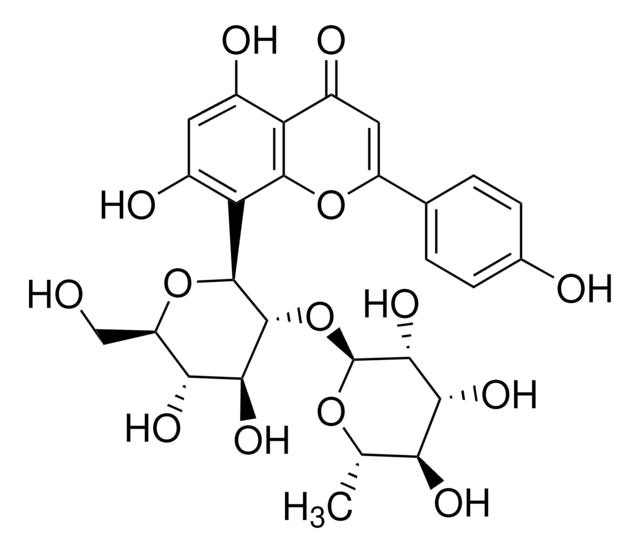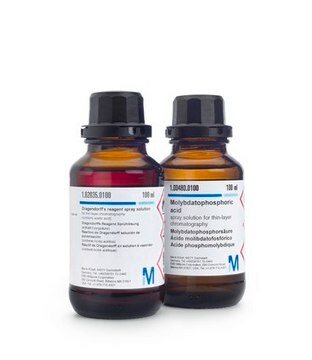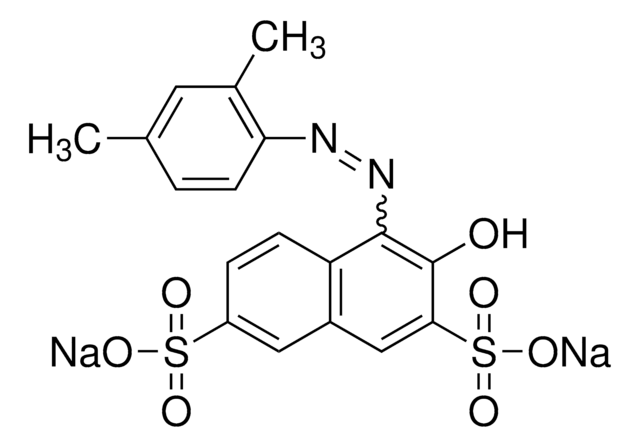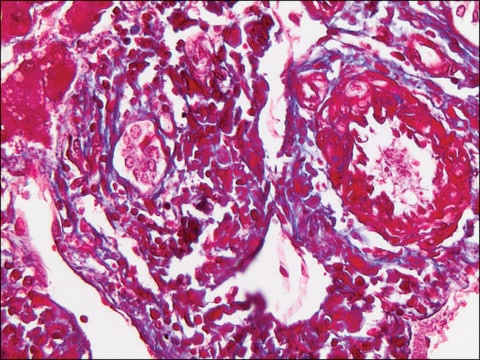79560
Phosphomolybdic acid hydrate
for microscopy
Synonyme(s) :
Molybdophosphoric acid
About This Item
Produits recommandés
Qualité
for microscopy
Niveau de qualité
Forme
crystals
Pertinence de la réaction
reagent type: oxidant
Technique(s)
thin layer chromatography (TLC): suitable
Perte
21-23% loss on drying, 110 °C
Densité
1.62 g/mL at 25 °C (lit.)
Traces d'anions
chloride (Cl-): ≤50 mg/kg
sulfate (SO42-): ≤100 mg/kg
Traces de cations
Ca: ≤50 mg/kg
Cd: ≤5 mg/kg
Co: ≤20 mg/kg
Cr: ≤5 mg/kg
Cu: ≤10 mg/kg
Fe: ≤50 mg/kg
K: ≤50 mg/kg
Mg: ≤20 mg/kg
Mn: ≤100 mg/kg
NH4+: ≤30 mg/kg
Na: ≤50 mg/kg
Ni: ≤10 mg/kg
Pb: ≤20 mg/kg
Zn: ≤50 mg/kg
Chaîne SMILES
O.O=[Mo](=O)=O.O=[Mo](=O)=O.O=[Mo](=O)=O.O=[Mo](=O)=O.O=[Mo](=O)=O.O=[Mo](=O)=O.O=[Mo](=O)=O.O=[Mo](=O)=O.O=[Mo](=O)=O.O=[Mo](=O)=O.O=[Mo](=O)=O.O=[Mo](=O)=O.OP(O)(O)=O
InChI
1S/12Mo.H3O4P.H2O.36O/c;;;;;;;;;;;;1-5(2,3)4;;;;;;;;;;;;;;;;;;;;;;;;;;;;;;;;;;;;;/h;;;;;;;;;;;;(H3,1,2,3,4);1H2;;;;;;;;;;;;;;;;;;;;;;;;;;;;;;;;;;;;
Clé InChI
PDDXOPNEMCREGN-UHFFFAOYSA-N
Vous recherchez des produits similaires ? Visite Guide de comparaison des produits
Catégories apparentées
Description générale
Application
Autres remarques
Mention d'avertissement
Danger
Mentions de danger
Conseils de prudence
Classification des risques
Eye Dam. 1 - Ox. Sol. 3 - Skin Corr. 1B
Code de la classe de stockage
5.1B - Oxidizing hazardous materials
Classe de danger pour l'eau (WGK)
WGK 3
Point d'éclair (°F)
Not applicable
Point d'éclair (°C)
Not applicable
Équipement de protection individuelle
Eyeshields, Faceshields, Gloves, type P3 (EN 143) respirator cartridges
Faites votre choix parmi les versions les plus récentes :
Déjà en possession de ce produit ?
Retrouvez la documentation relative aux produits que vous avez récemment achetés dans la Bibliothèque de documents.
Les clients ont également consulté
Notre équipe de scientifiques dispose d'une expérience dans tous les secteurs de la recherche, notamment en sciences de la vie, science des matériaux, synthèse chimique, chromatographie, analyse et dans de nombreux autres domaines..
Contacter notre Service technique










